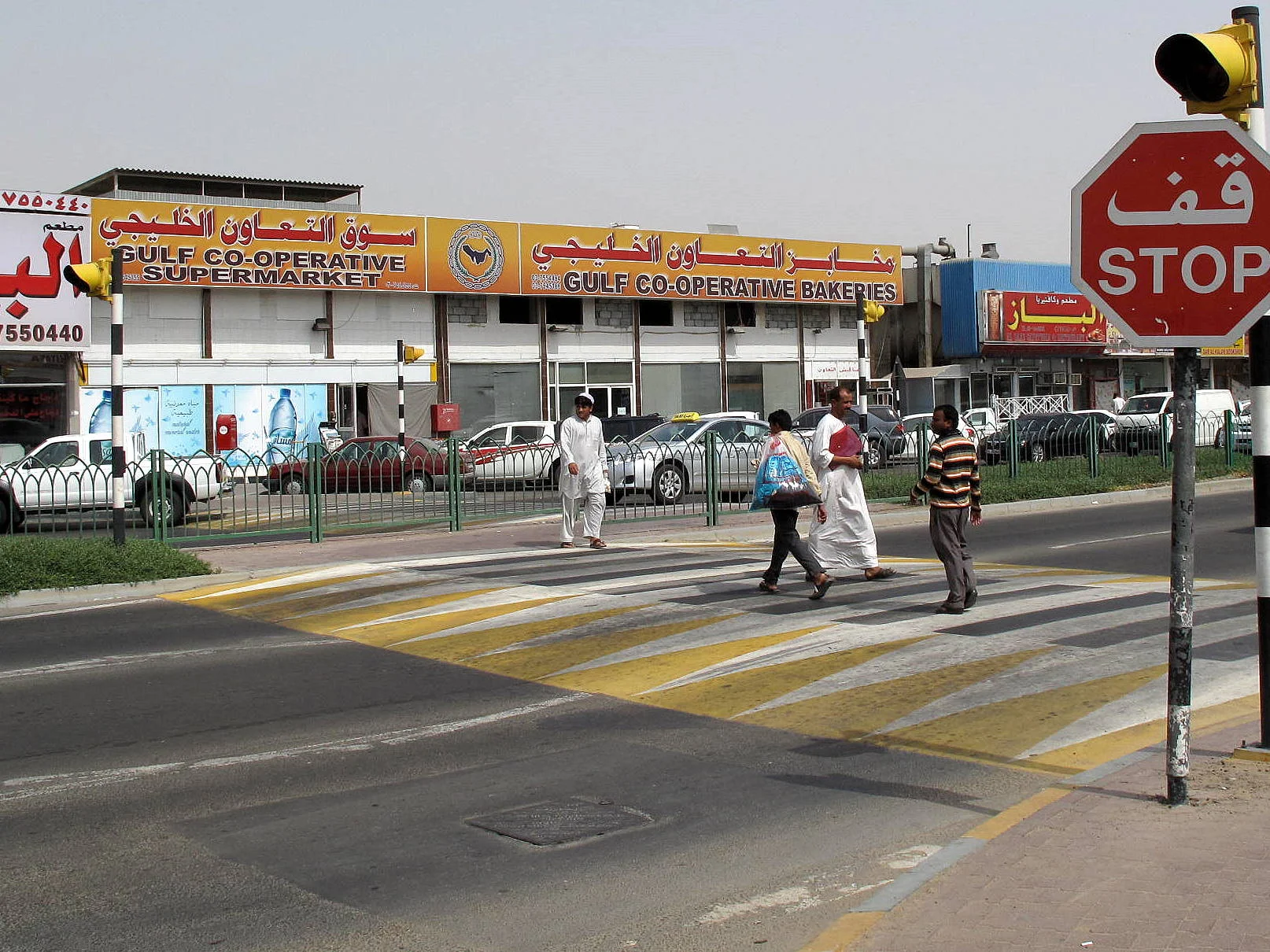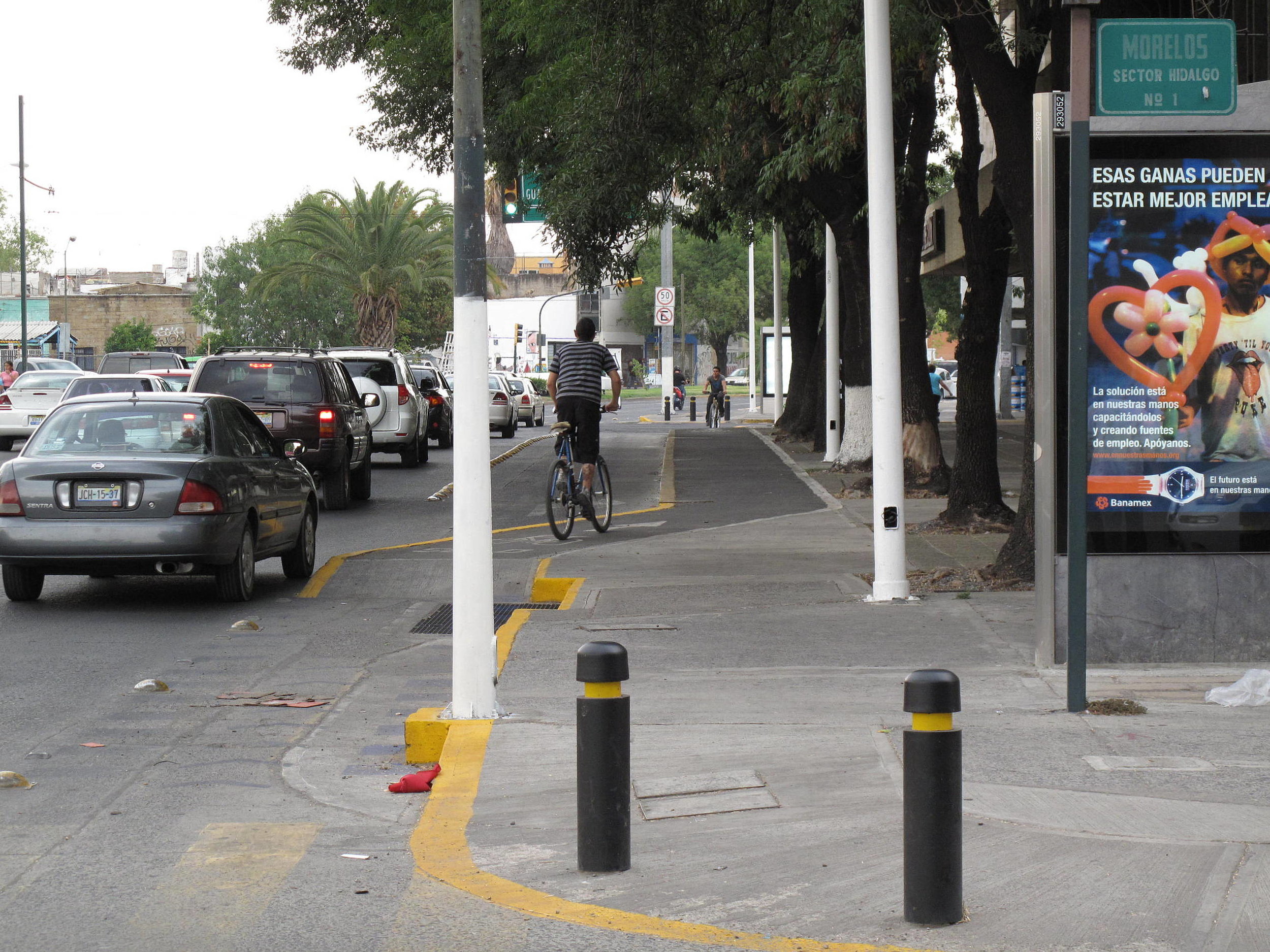
Complete Streets
Complete streets is the au courant phrase for the idea that if you make streets “complete”, then everyone can use them, as opposed to just drivers. In its narrowest sense, it ensures all streets have sidewalks, bike lanes, transit shelters, crosswalks, and the like. Broadly speaking, it morphs into complete networks of mobility.

Median tip at TAMU
“After” photo of new median tip and bike crossing at intersection of Bizzell St and Polo Rd on the Texas A&M University campus. Our tactical urbanism installation demonstrated the workability of the proposal.
Photo courtesy David Lieb.

Shared street shared by friends, Longfellow Street, Santa Monica CA (USA)
Second official shared street in the USA. Completed 2012. We substituted pavers, landscaping and rain gardens for sidewalks, so people walk in the ADA accessible roadway and impermeable pavement is minimized.
“Merging pedestrians with motorists, the redesigned two blocks of Longfellow Street does not incorporate the traditional practice of segregating motor vehicles, pedestrians and other road users through the traditional roadway, curb, sidewalk, and parkway configuration. In its place is a design featuring differentiated textured pavement, plantings, and lighting lending to a people-oriented understanding of public space, where walking, cycling, socializing, and driving cars become integrated activities. ‘No other city that we know of has done this,’ [BNGIC Chair Dennis] Woods added. ‘I hope it serves as a model’.” — Borderline Neighborhood Group Improvement Committee press release, 28 Mar 2011
https://nacto.org/case-study/longfellow-street-residential-shared-street-santa-monica-ca/
Photo courtesy Lillian Jessamine King.

Avenida Memoria De Se, Rio de Janeiro (Brazil)
In 2010 we led a design workshop and conceptual design for Avenida Memoria De Se in Rio de Janeiro (Brazil). This is in the Lapa neighborhood, home of samba. We redesigned this particular intersection to have more space for people. It would appear they approve.

South Grand Boulevard, St Louis MO (USA)
The highest volume (25,000 ADT) 4 to 3-lane road diet in the nation. Six blocks of South Grand Blvd (from Arsenal to Utah) were converted from four to three lanes, the sidewalks were widened, and rain gardens added. Constructed 2011.
As of 2019, retail sales up 30%.
As of April 2015 (per East West Gateway):
• Occupancy is up
• Tax revenues up 8% the first year after construction, 6% the year after that, and 12% for year three
• Five store fronts have been renovated, proprietors / owners directly attributing the road diet
• For-sale properties move very quickly
Awarded a Great Place in America in 2017 by the American Planning Association.

Avenida Eliseu de Almeida, Butantã, São Paulo (Brasil)
Cycle track in the median of Avenida Eliseu de Almeida, built over a canal, 2006.

Al Ain (UAE)
Raised crosswalks, part of the Improvement of Pedestrian Safety and Movement in Al Ain project, 2011.

Calzado del Federalismo, Guadalajara (México)
1.4 km long cycle track on Calzado del Federalismo from Av López Cotilla to Av Francia. Constructed 2009.
Bike lane is at sidewalk level along the block and lowers to street level at the intersections. Bike lane is protected by on-street parking and swerves to become a striped bike lane (with mini-bollards) at the intersections. Bike lane is striped through intersection. Corner radii tightened to restrict turning speeds and protect cyclists and people in crosswalks. Crosswalks and ramps are as wide as the sidewalk. Medians extended to protect predestrians.

Qunli District, Harbin (China)
Roadway network, cycle tracks, intersections. Designed 2008, built 2009.

Bicycle and Pedestrian Facilities along BRT Corridor in Guangzhou (China)
Conceptual design 2006-09, built 2010. In association with ITDP.
This is the the largest bus rapid transit corridor in Asia. We trained project designers on best practices for bicycle and pedestrian facilities, and prepared conceptual designs. We focused on collision hot spots. We performed pedestrian tracking surveys and time-lapse videos.

Brooklyn Bridge Path - Manhattan landing
Teardrop design meant to separate cyclists from walkers, 1997.

Staten Island Traffic Calming, 1998
The DOT traffic calming team identified overly wide streets, safety hot spots, and oddly shaped intersections around New York City. We converted the street to sidewalk space then coordinated with the Park Department’s Green Streets program for plantings.
